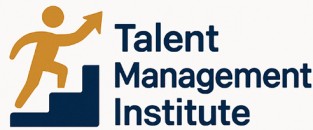
Understanding Workforce Performance
Decoding Workforce Performance
Understanding workforce performance is crucial for any organization aiming to achieve its strategic goals. At its core, workforce performance is about assessing how effectively employees fulfill their roles and contribute to the company's objectives. This involves a comprehensive evaluation of various elements such as productivity, job satisfaction, and the overall efficiency of the management systems in place.
Performance management is not just about annual performance reviews or appraisals. It's a continuous process that involves setting clear goals, providing regular feedback, and fostering an environment where employees can thrive. Managers and supervisors play a pivotal role in this process, ensuring that the workforce is aligned with the company's vision and objectives.
The Importance of a Structured Evaluation Process
A structured evaluation process is essential for accurately measuring individual performance and identifying areas for improvement. This involves using performance metrics and workforce analytics to gain insights into employee performance levels. By doing so, companies can tailor their management systems to better support their employees, ultimately enhancing productivity and job satisfaction.
Moreover, a well-defined performance management system helps in identifying high-performing employees who can be groomed for leadership roles. It also aids in recognizing those who may need additional support or development opportunities. This systematic approach ensures that the workforce remains motivated and engaged, driving the company towards success.
For organizations looking to refine their performance management strategies, exploring DA Davidson's approach to variable compensation programs can provide valuable insights into incentivizing and rewarding employees effectively.
Identifying Key Performance Indicators
Pinpointing Critical Performance Indicators
Identifying key performance indicators (KPIs) is essential for enhancing workforce performance. These metrics are fundamental in understanding and gauging the efficiency and effectiveness of employees. To ensure a consistent management process, companies need to establish clear performance metrics tailored to their business goals. This process involves pinpointing which aspects of employee performance directly contribute to the overall success of the organization.
A well-defined performance management system allows managers and supervisors to assess productivity accurately. This system should incorporate both quantitative and qualitative measures. While quantitative evaluation relies on measurable data like sales numbers and project deadlines, qualitative assessment involves observing behaviors that lead to high job satisfaction and corporate success.
- Define Clear Objectives: Establishing clear and achievable performance goals enables employees to understand what's expected of them. This performance appraisal ensures every individual aligns their personal goals with those of the company.
- Use Workforce Analytics: Workforce analytics tools are invaluable in identifying critical performance indicators. These tools help companies evaluate sample performance documents and identify trends that might affect productivity and employee performance.
- Establish a Standardized System: A standardized evaluation system simplifies the evaluation process for managers. It promotes uniformity across different departments, making performance evaluation fair and transparent.
- Monitor and Adjust: Performance management is an ongoing process. Regular performance reviews and evaluations help pinpoint areas needing improvement. Managers should remain flexible to adjust KPIs according to the changing environment or organizational needs.
The right KPIs facilitate a systematic evaluation of individual performance, providing a framework that supports the development and success of both the employees and the company. For more strategic insights on enhancing workforce performance, consider exploring these effective strategies to boost staff morale.
Strategies for Enhancing Employee Engagement
Boosting Employee Participation and Performance
Employee engagement is a critical driver of workforce performance, directly impacting productivity, job satisfaction, and overall company success. Effective performance management systems recognize the importance of fostering commitment and involvement among employees to achieve organizational goals.
Several strategies can enhance employee engagement, ultimately improving individual performance:
- Set Clear Goals: Establish well-defined objectives that align with the company's mission. Employees perform better when they understand what is expected of them and how their work contributes to the overall success of the organization.
- Provide Regular Feedback: Continuous feedback loops create an environment where employees feel valued and informed about their performance. This feedback helps them understand the areas they excel in and identify opportunities for development. Encouraging two-way communication between managers and employees enhances trust and transparency.
- Promote a Healthy Work-Life Balance: Ensuring employees have the time and resources to maintain a healthy balance between their professional and personal lives is essential for sustaining engagement and minimizing burnout. Flexible work arrangements and wellness initiatives can play a crucial role here.
- Empower Employees with Autonomy: Granting employees the authority to make decisions regarding their work processes fosters a sense of ownership and accountability. Employees are more likely to be engaged when they have some control over their tasks and feel their input is valued by management.
- Facilitate Skill Development: Providing training and development opportunities helps build competence and confidence in the workforce. A focus on continuous learning prepares employees for future challenges and enhances their commitment to the organization.
By implementing these strategies, companies can cultivate a motivated workforce with high levels of engagement. Such an approach not only enhances productivity but also strengthens the organization's alignment with its long-term objectives. For more insights on leveraging assessment tools to unlock employee potential, visit the Talent Management Institute's blog on employee assessment tools.
The Role of Continuous Learning and Development
Fostering a Learning Environment
Continuous learning and development play a crucial role in enhancing workforce performance. By fostering a learning environment, companies can ensure that their employees are equipped with the latest skills and knowledge necessary to meet evolving business demands. This not only improves individual performance but also contributes to overall productivity and job satisfaction.
Implementing Effective Training Programs
To achieve this, organizations should implement effective training programs tailored to the specific needs of their workforce. These programs should be aligned with the company's performance goals and designed to address skill gaps identified during performance evaluations. By doing so, employees can enhance their capabilities, leading to improved performance metrics and a more efficient management process.
Encouraging Self-Directed Learning
Encouraging self-directed learning is another strategy that can significantly impact employee performance. Providing access to online courses, workshops, and seminars allows employees to take charge of their own development. This approach not only empowers employees but also fosters a culture of continuous improvement, which is essential for maintaining high levels of workforce performance.
Role of Managers and Supervisors
Managers and supervisors play a pivotal role in facilitating continuous learning and development. They should actively participate in the performance planning process, helping employees set realistic development goals and providing regular feedback. This ongoing support ensures that employees remain motivated and engaged, ultimately leading to better performance outcomes.
Measuring the Impact of Learning Initiatives
Finally, it is important to measure the impact of learning initiatives on employee performance. Utilizing workforce analytics and performance management systems can help track progress and evaluate the effectiveness of training programs. By regularly reviewing these metrics, companies can make informed decisions about future learning and development strategies, ensuring that they continue to meet the needs of their workforce.
Leveraging Technology for Performance Improvement
Utilizing Technological Innovations to Elevate Performance
The integration of technology into workforce management processes is becoming increasingly crucial in optimizing employee performance and productivity. With the right tools, managers can streamline performance planning and appraisal, ensuring that individual and team goals align with the company’s strategic objectives.
- Performance Management Systems: Modern performance management systems offer comprehensive solutions for tracking and evaluating employee performance. These systems provide a centralized platform where data related to performance evaluation, feedback, and development can be stored and accessed easily.
- Workforce Analytics: Utilizing workforce analytics enables managers to gather insights into employee performance metrics, facilitating data-driven decision-making. This aids in identifying areas for improvement and informs the development of targeted interventions.
- Time Management Tools: Implementing time management solutions can boost productivity by helping employees efficiently allocate their time and resources. These tools often come with features such as reminders, trackers, and automated scheduling to optimize work processes.
- Feedback and Appraisal Platforms: Leveraging platforms that enable continuous feedback and appraisal allows for a more dynamic approach to performance reviews. This helps maintain an ongoing dialogue between employees and management, fostering job satisfaction and enhancing individual performance.
Integrating these technological solutions into your performance management strategy not only improves efficiency but also enhances the overall workforce performance. Ensuring that all employees have access to and are trained in using these tools is essential for maximizing their benefits.
Creating a Culture of Feedback and Recognition
Fostering a Feedback-Rich Environment
Creating a feedback-rich environment is crucial to enhancing employee performance and workforce effectiveness. Having an open communication culture where managers and employees feel comfortable giving and receiving constructive feedback can significantly impact job satisfaction and overall productivity.
A strong feedback system involves regular performance reviews. This process should include comprehensive performance evaluation where individual performance metrics are mapped against performance goals. An effective performance appraisal can support managers in identifying development opportunities for employees, allowing for a tailored approach to skill development.
Moreover, providing timely and relevant feedback is essential to the continuous improvement of employees. This can be achieved through periodic evaluations that go beyond simply meeting formal appraisal timelines. Implementing a performance management system that enables fluid communication on performance metrics can help maintain this momentum.
Integrating technology within the feedback process enhances transparency and accessibility. Digital platforms for performance reviews allow managers, supervisors, and employees easy access to appraisal results and feedback, fostering a more agile and responsive performance management process.
In entering this feedback loop, it is important to recognize the role of recognition. Acknowledging employees’ efforts and accomplishments not only boosts morale but also engages them more deeply with the company's objectives, reinforcing a sense of belonging and motivation.
Incorporating these elements into a well-rounded feedback culture can significantly elevate workforce performance, ensuring that the company remains competitive by maximizing individual performance and collective potential.













